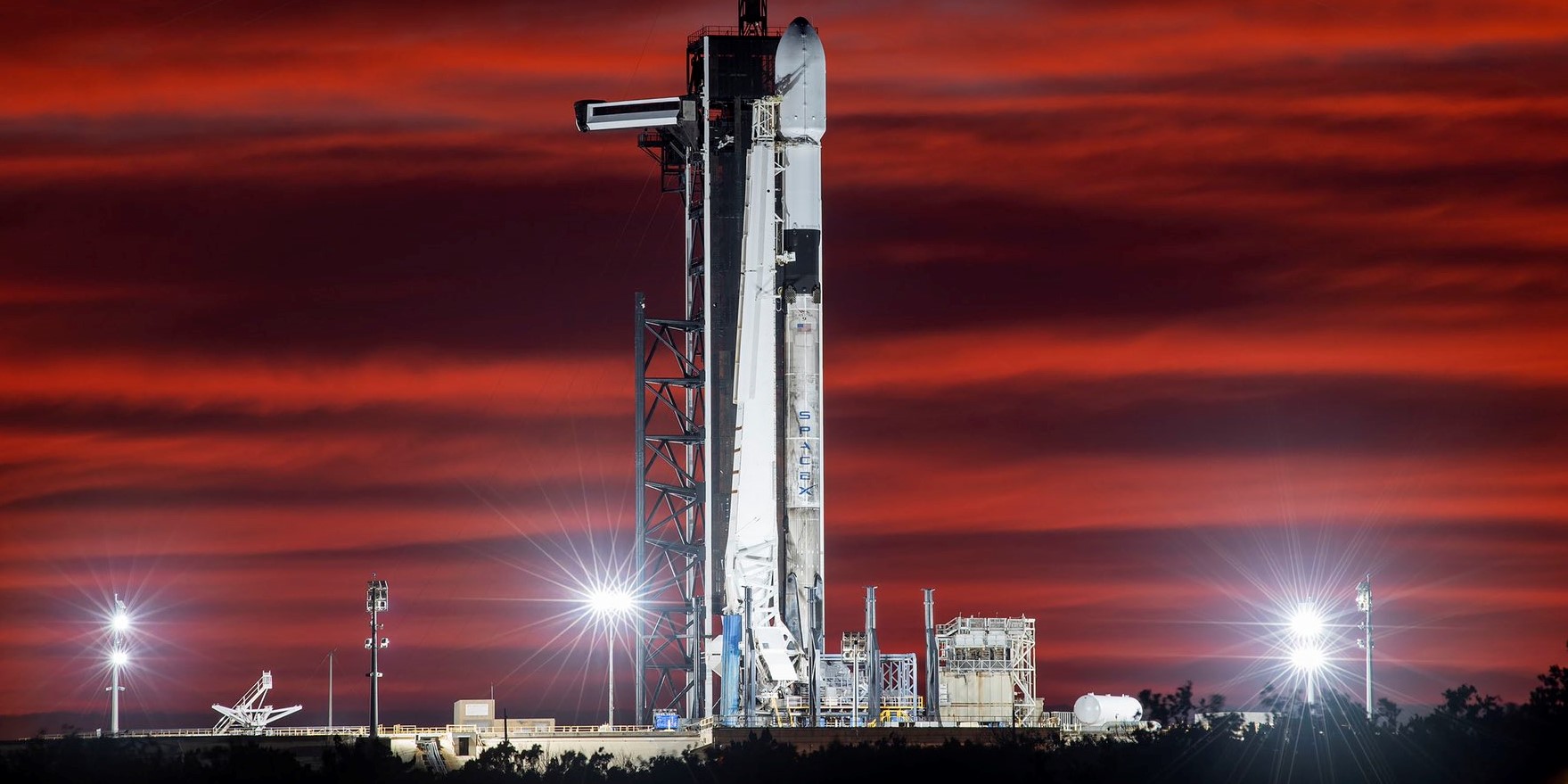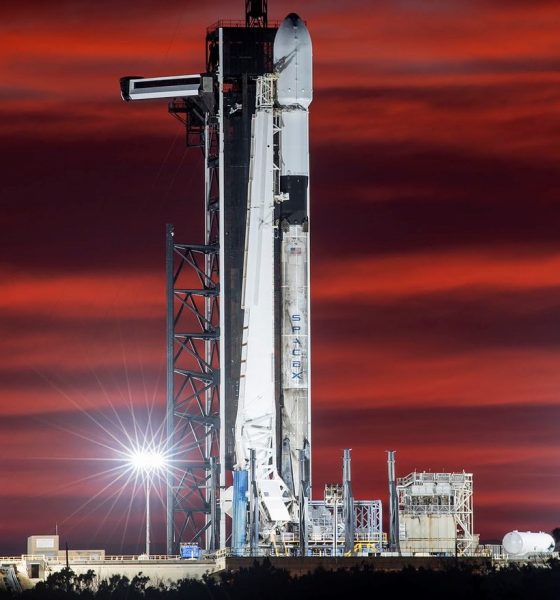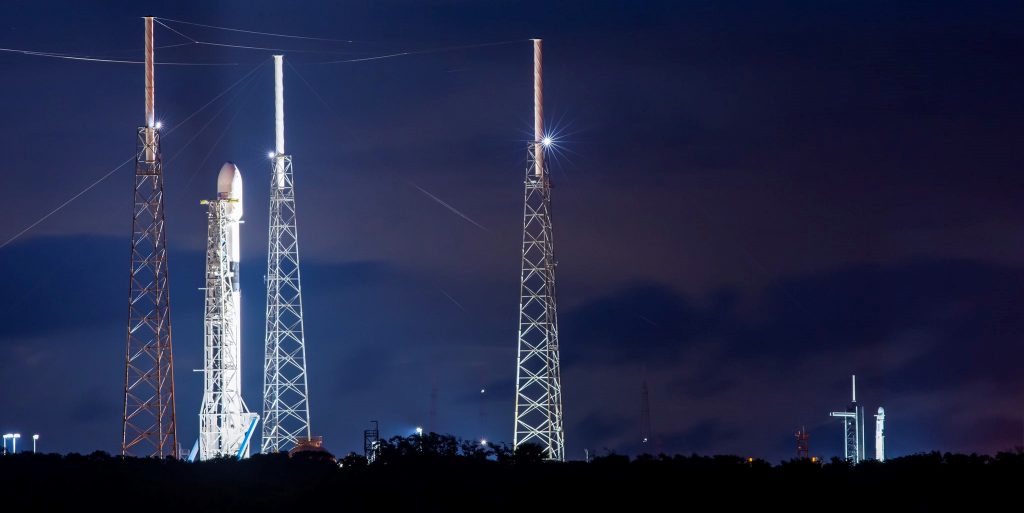

News
SpaceX Starlink launch suffers third weather scrub, next attempt Tuesday
Update: Multiple weather constraint violations forced SpaceX to scrub today’s Starlink-12 launch attempt less than half an hour before liftoff, marking the mission’s third weather-related scrub and fourth abort overall since mid-September. As of October 4th, the US Air Force 45th Space Wing predicted a 40% chance of weather violation.
SpaceX’s fifth Starlink-12 launch attempt is scheduled no earlier than 7:29 am EDT (11:29 UTC) on Tuesday, October 6th. The mission-specific T-1 weather forecast predicts a 70% chance of favorable conditions.
On the heels of a rare last-second Falcon 9 launch abort, SpaceX is closing in on its third attempt to launch the 12th batch of operational Starlink satellites.
Scheduled to lift off from Kennedy Space Center (KSC) Launch Complex 39A (Pad 39A) no earlier than (NET) 7:51 am EDT (11:51 UTC) on Monday, October 5th, Starlink-12 was originally scheduled to launch in mid-September. Bad weather at the Atlantic Ocean landing zone caused a ten-day delay from September 17th to the 27th, followed by a pad weather delay on the 28th.
After a ULA Delta IV Heavy mission with range priority was scrubbed for the seventh time on September 30th, SpaceX tried to launch Starlink-12 again but suffered an abort – later blamed on a pad sensor – seven seconds before liftoff. Finally, a new Falcon 9 launch with an upgraded GPS III satellite aboard was aborted just two seconds before liftoff on October 2nd. Moved from NET October 3rd to the 5th just prior to GPS III SV04’s separate launch delay, Starlink-12 is now up next.
Interrupting what has otherwise been a much-improved level of launch readiness and schedule reliability for Falcon 9 and Falcon Heavy’s Block 5 upgrade, this recent string of delays – while mostly the result of weather and ULA’s own NROL-44 launch delays – has even become a concern for CEO Elon Musk. Currently focused on building out SpaceX’s new Starship factory and pushing towards the rocket’s first high-altitude and orbital test flights in Boca Chica, Texas, Musk stated that he would be flying to Cape Canaveral “to review hardware in person” on the week of October 5th.
Musk also says that SpaceX is “doing a broad review of launch site, propulsion, structures, avionics, range, & regulatory constraints” to determine if an apparent goal of “48 launches” in 2021 is feasible.
To be fair to SpaceX, most of the plague of delays suffered by the company in the last month has been caused by a mixture of weather and the range’s preferential treatment of ULA’s “national security” NROL-44 launch. Additionally, of an impressive seven ULA NROL-44 launch attempts between August 26th and September 30th, just a single one was caused by weather – the remaining six a result of a wide variety of technical software and hardware bugs. SpaceX’s Starlink-12 and GPS III SV04 missions have only suffered one technical launch abort each on September 30th and October 2nd.
In other words, short of upgrading Falcon rockets to launch and land in worse weather conditions, most of SpaceX’s delays have been largely out of the company’s control, while ULA’s NROL-44 struggles demonstrate just how much worse things could be. According to an unofficial analysis of 44 Falcon Block 5 launches since May 2018, only four technical launch aborts have been triggered by a booster fault. Pad-caused aborts have been roughly as common, meaning that 1 in roughly 6 to 8 SpaceX launches suffers some kind of abort shortly before liftoff, on average.

Altogether, Falcon Block 5 rockets have been relatively dependable for on-time, on-schedule launches even if SpaceX has struggled with more repeated delays than usual in the last few months. To achieve anywhere close to 48 launches annually, however, major improvements will need to be made, likely including upgrades to whatever is responsible for Falcon 9’s weather constraints. As of October 2020, SpaceX has never launched four times in one month (or four times in the same ~30-day period). To launch 48 times in one year, SpaceX will need to average four launches per month. That, of course, in no way accounts for the possibility that 2020-esque summer weather could functionally cut 4-8+ weeks off of Falcon 9’s annual availability.
Regardless, SpaceX will begin live coverage of the third Starlink-12 launch attempt around 7:35 am EDT (11:35 UTC). Tune in to (hopefully) catch the company’s 17th launch this year.
Check out Teslarati’s Marketplace! We offer Tesla accessories, including for the Tesla Cybertruck and Tesla Model 3.

News
Nvidia CEO Jensen Huang explains difference between Tesla FSD and Alpamayo
“Tesla’s FSD stack is completely world-class,” the Nvidia CEO said.

NVIDIA CEO Jensen Huang has offered high praise for Tesla’s Full Self-Driving (FSD) system during a Q&A at CES 2026, calling it “world-class” and “state-of-the-art” in design, training, and performance.
More importantly, he also shared some insights about the key differences between FSD and Nvidia’s recently announced Alpamayo system.
Jensen Huang’s praise for Tesla FSD
Nvidia made headlines at CES following its announcement of Alpamayo, which uses artificial intelligence to accelerate the development of autonomous driving solutions. Due to its focus on AI, many started speculating that Alpamayo would be a direct rival to FSD. This was somewhat addressed by Elon Musk, who predicted that “they will find that it’s easy to get to 99% and then super hard to solve the long tail of the distribution.”
During his Q&A, Nvidia CEO Jensen Huang was asked about the difference between FSD and Alpamayo. His response was extensive:
“Tesla’s FSD stack is completely world-class. They’ve been working on it for quite some time. It’s world-class not only in the number of miles it’s accumulated, but in the way it’s designed, the way they do training, data collection, curation, synthetic data generation, and all of their simulation technologies.
“Of course, the latest generation is end-to-end Full Self-Driving—meaning it’s one large model trained end to end. And so… Elon’s AD system is, in every way, 100% state-of-the-art. I’m really quite impressed by the technology. I have it, and I drive it in our house, and it works incredibly well,” the Nvidia CEO said.
Nvidia’s platform approach vs Tesla’s integration
Huang also stated that Nvidia’s Alpamayo system was built around a fundamentally different philosophy from Tesla’s. Rather than developing self-driving cars itself, Nvidia supplies the full autonomous technology stack for other companies to use.
“Nvidia doesn’t build self-driving cars. We build the full stack so others can,” Huang said, explaining that Nvidia provides separate systems for training, simulation, and in-vehicle computing, all supported by shared software.
He added that customers can adopt as much or as little of the platform as they need, noting that Nvidia works across the industry, including with Tesla on training systems and companies like Waymo, XPeng, and Nuro on vehicle computing.
“So our system is really quite pervasive because we’re a technology platform provider. That’s the primary difference. There’s no question in our mind that, of the billion cars on the road today, in another 10 years’ time, hundreds of millions of them will have great autonomous capability. This is likely one of the largest, fastest-growing technology industries over the next decade.”
He also emphasized Nvidia’s open approach, saying the company open-sources its models and helps partners train their own systems. “We’re not a self-driving car company. We’re enabling the autonomous industry,” Huang said.
Elon Musk
Elon Musk confirms xAI’s purchase of five 380 MW natural gas turbines
The deal, which was confirmed by Musk on X, highlights xAI’s effort to aggressively scale its operations.

xAI, Elon Musk’s artificial intelligence startup, has purchased five additional 380 MW natural gas turbines from South Korea’s Doosan Enerbility to power its growing supercomputer clusters.
The deal, which was confirmed by Musk on X, highlights xAI’s effort to aggressively scale its operations.
xAI’s turbine deal details
News of xAI’s new turbines was shared on social media platform X, with user @SemiAnalysis_ stating that the turbines were produced by South Korea’s Doosan Enerbility. As noted in an Asian Business Daily report, Doosan Enerbility announced last October that it signed a contract to supply two 380 MW gas turbines for a major U.S. tech company. Doosan later noted in December that it secured an order for three more 380 MW gas turbines.
As per the X user, the gas turbines would power an additional 600,000+ GB200 NVL72 equivalent size cluster. This should make xAI’s facilities among the largest in the world. In a reply, Elon Musk confirmed that xAI did purchase the turbines. “True,” Musk wrote in a post on X.
xAI’s ambitions
Recent reports have indicated that xAI closed an upsized $20 billion Series E funding round, exceeding the initial $15 billion target to fuel rapid infrastructure scaling and AI product development. The funding, as per the AI startup, “will accelerate our world-leading infrastructure buildout, enable the rapid development and deployment of transformative AI products.”
The company also teased the rollout of its upcoming frontier AI model. “Looking ahead, Grok 5 is currently in training, and we are focused on launching innovative new consumer and enterprise products that harness the power of Grok, Colossus, and 𝕏 to transform how we live, work, and play,” xAI wrote in a post on its website.
Elon Musk
Elon Musk’s xAI closes upsized $20B Series E funding round
xAI announced the investment round in a post on its official website.

xAI has closed an upsized $20 billion Series E funding round, exceeding the initial $15 billion target to fuel rapid infrastructure scaling and AI product development.
xAI announced the investment round in a post on its official website.
A $20 billion Series E round
As noted by the artificial intelligence startup in its post, the Series E funding round attracted a diverse group of investors, including Valor Equity Partners, Stepstone Group, Fidelity Management & Research Company, Qatar Investment Authority, MGX, and Baron Capital Group, among others.
Strategic partners NVIDIA and Cisco Investments also continued support for building the world’s largest GPU clusters.
As xAI stated, “This financing will accelerate our world-leading infrastructure buildout, enable the rapid development and deployment of transformative AI products reaching billions of users, and fuel groundbreaking research advancing xAI’s core mission: Understanding the Universe.”
xAI’s core mission
Th Series E funding builds on xAI’s previous rounds, powering Grok advancements and massive compute expansions like the Memphis supercluster. The upsized demand reflects growing recognition of xAI’s potential in frontier AI.
xAI also highlighted several of its breakthroughs in 2025, from the buildout of Colossus I and II, which ended with over 1 million H100 GPU equivalents, and the rollout of the Grok 4 Series, Grok Voice, and Grok Imagine, among others. The company also confirmed that work is already underway to train the flagship large language model’s next iteration, Grok 5.
“Looking ahead, Grok 5 is currently in training, and we are focused on launching innovative new consumer and enterprise products that harness the power of Grok, Colossus, and 𝕏 to transform how we live, work, and play,” xAI wrote.








